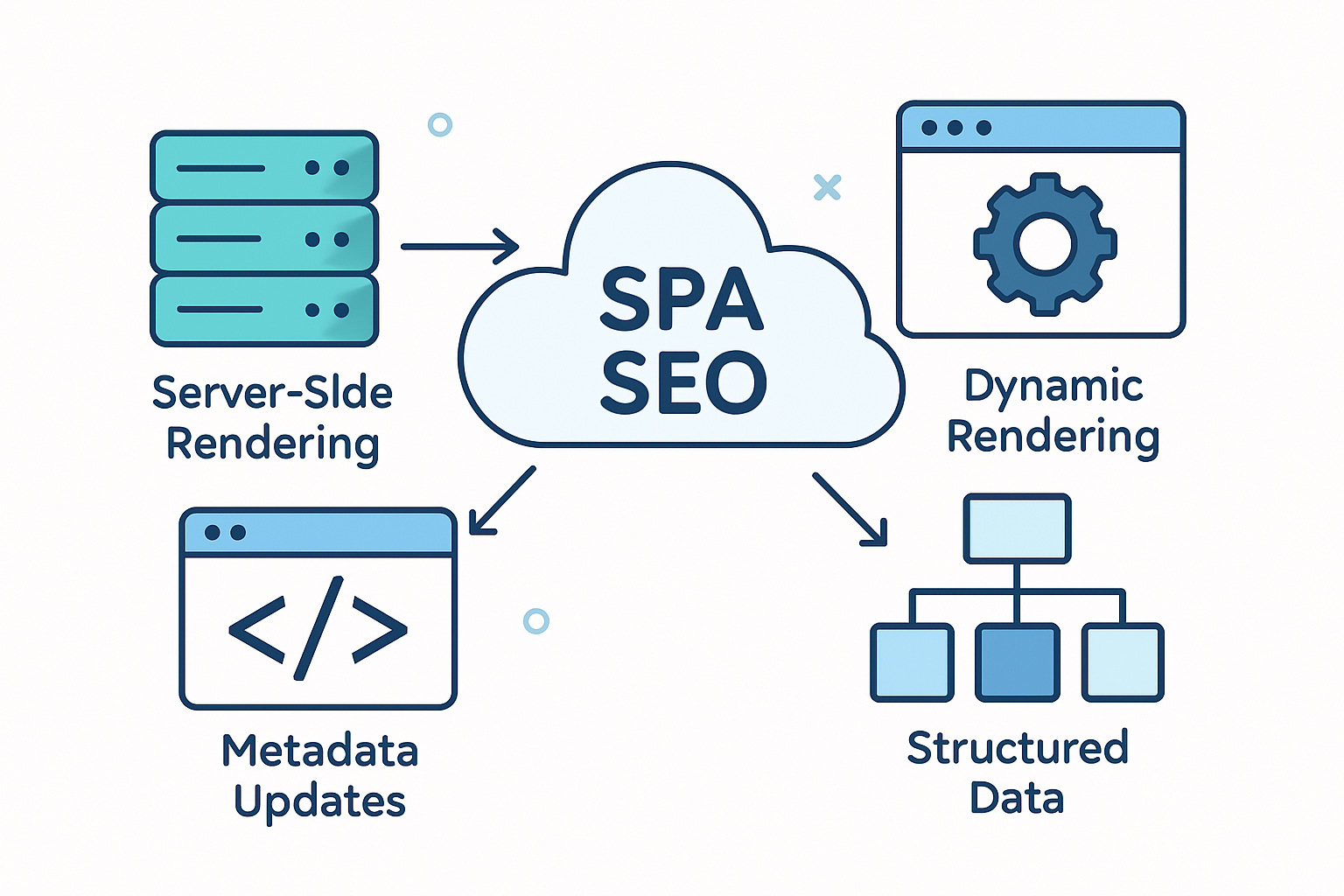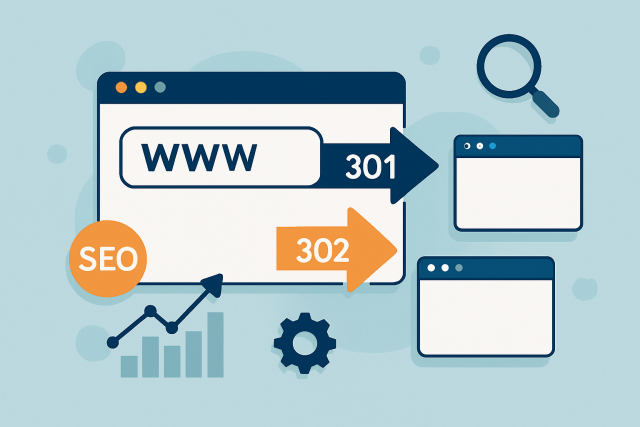
How ssl seo improves your website security and rankings
Learn how SSL SEO not only secures your website but also drives higher Google rankings by boosting t...

Single Page Applications (SPAs) can be a headache for SEO since they rely heavily on JavaScript and load content on the fly. Traditional SEO tricks often fall flat with SPAs and cause problems with crawling and indexing, leading to a dip in organic visibility. To climb the rankings ladder, webmasters and SEO pros must use savvy, technically nuanced strategies tailored to the fast-paced dynamic nature of SPAs.
SPAs update content dynamically using JavaScript without the hassle of reloading the entire page. They typically handle URL changes right on the client side, crafting a smoother user experience that feels a lot snappier than your usual multi-page websites.
SPAs often hit snags with SEO like slow indexing caused by client-side rendering delays and the headaches search engines face when crawling dynamic JavaScript content. Complications from non-unique or hash-based URLs add to these problems.
Tackling SPA SEO challenges usually means rolling up your sleeves and zeroing in on strategies that keep your content not just visible, but also easily crawlable and indexable by search engines.
Server-Side Rendering (SSR) and static prerendering serve up fully rendered HTML right off the server’s plate to users and search engines alike. This means crawlers don’t need to tinker with any JavaScript. This approach boosts crawlability, speeds up important initial page loads, and ensures content looks just right no matter which user agent is checking it out.
Dynamic rendering serves up different content depending on who is looking. Search engines receive a neat pre-rendered static HTML snapshot, while real users enjoy the full JavaScript-powered SPA experience.
Making sure every SPA state or page has its own unique crawlable URL is important because it saves a lot of headaches down the road. Using HTML5’s pushState instead of old-school hash-based URLs helps create clean and meaningful URLs that search engines generally approve. When routing is set up right, it opens the door to deep linking, effortless sharing and accurate indexing of the SPA’s different sections and content states.
Use descriptive, keyword-rich URLs that clearly mirror the content’s structure. Think of them as signposts that keep both users and search engines on the right track.
Steer clear of hash # fragments in URLs that really count for SEO because clean URLs powered by pushState usually play nicer with the search engines.
Don’t forget to add canonical tags when multiple URLs point to the same page. This little trick helps dodge pesky duplicate content issues.
Toss in breadcrumb markup to give your site navigation a boost and make those search result snippets more helpful and inviting.
Support deep linking so users and crawlers alike can hop straight to any specific view or page within the SPA without any detours.
Keeping metadata like titles, descriptions and Open Graph tags updated on the fly as users navigate through SPA views is vital for SEO and social sharing. It’s a behind-the-scenes task that pays off by helping search engines spot the right unique metadata for each state.
Performance often plays a surprisingly big role in SEO rankings. Slow single-page applications can really test a user's patience and often lead to higher bounce rates and lower visibility. Giving load times a boost with tricks like lazy loading or code splitting improves responsiveness. It smooths out user interactions and sends positive signals to search engines.
Adding structured data to SPAs really helps search engines get a clearer picture of not just the content but also the context of your pages. This usually opens the door to rich snippets and other cool search perks.

Diagram showing SPA SEO architecture including SSR, dynamic rendering, metadata updates, and structured data integration
When it comes to SEO and single page apps, regular audits and ongoing monitoring are vital for keeping SPA SEO humming smoothly. It's smart to use tools that can render JavaScript because this way you catch sneaky indexing issues and keep tabs on performance and keyword rankings.
| Task Description | Difficulty Level | Estimated Time | Expected SEO Impact |
|---|---|---|---|
| Enable SSR or prerendering for core pages | Medium | 1-2 weeks | High - gives search engines a smoother ride crawling your site |
| Update metadata dynamically on route change | Easy | 1-3 days | Medium - keeps your content feeling fresh and relevant |
| Fix URL structure to remove hashes | Medium | 3-5 days | High - cleans up indexing for better search visibility |
| Implement lazy loading and code splitting | Medium | About a week | High - boosts page load speed, making users (and Google) happier |
| Add structured data with JSON-LD | Easy | 2-4 days | Medium - ups your chances for those eye-catching rich snippets |
| Audit SPA crawlability and indexing weekly | Easy | Ongoing | High - helps you catch and fix issues before they snowball |
Flip the switch on SSR or use prerendering frameworks like Next.js or Nuxt.js to serve fully rendered HTML right from the start.
Use handy libraries such as React Helmet or Vue Meta to keep your meta tags fresh and dynamic as your content changes.
Take a close look at your SPA's routing. Replacing clunky hash-based URLs with sleeker pushState routes can make a big difference.
Add lazy loading for images and JavaScript modules that do not need to be visible immediately. This is a great way to speed up your initial load.
Include relevant structured data schemas and double-check them with the Rich Results Test. It adds a little extra sparkle to your SEO.
Make it a habit to run weekly crawlability audits using tools like Screaming Frog or Semrush's Site Audit. Catching SEO hiccups early can really save you trouble.

Learn how SSL SEO not only secures your website but also drives higher Google rankings by boosting t...

Discover how HTTPS impacts SEO and user trust with this comprehensive guide covering migration steps...

Discover actionable SEO strategies to optimize Single Page Applications effectively. Use Semrush too...

Confused by 301 and 302 redirects? This guide explains their differences, SEO effects, and how to us...